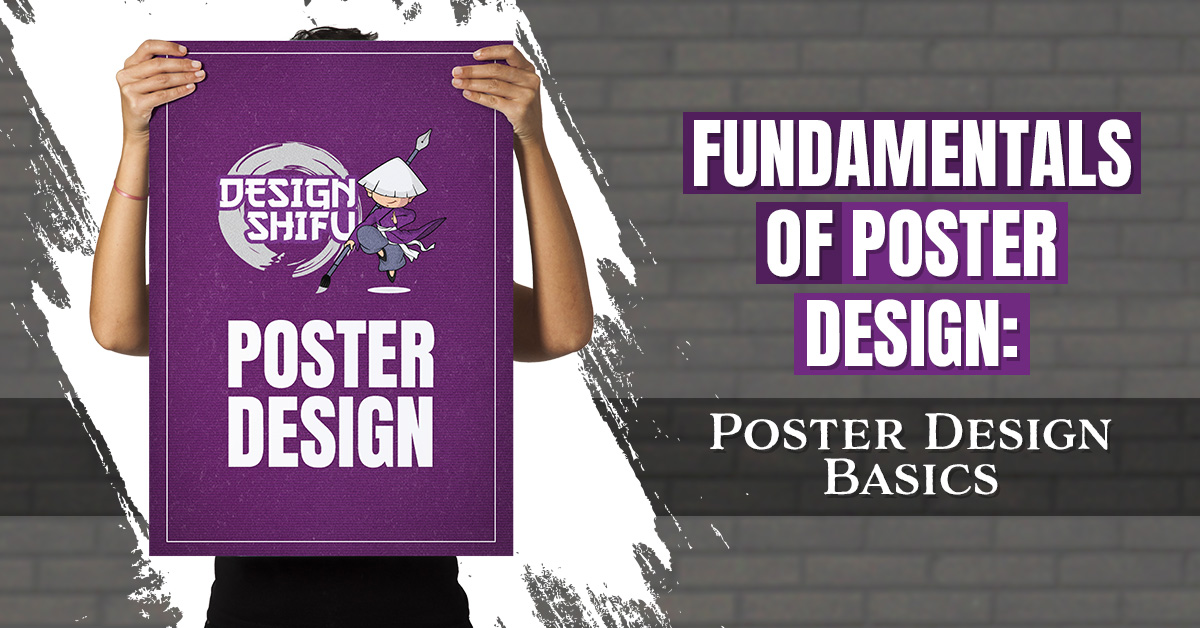
Poster design for your business doesn’t have to be difficult. If you have a clear message and a crazy idea to roll out, all you need is to get the fundamentals right to publish a poster that brings results. A successful poster campaign grabs the passersby’s attention and draws viewers in with a simple, uncomplicated layout so the reader can grasp information effortlessly.
Read the blog to discover the fundamentals of poster design to produce visually appealing and memorable posters.
Determine the goal
What sets a good poster apart from a bad one is clarity and its ability to resonate with the target audience. Pin down the goal of your poster marketing effort. What do you wish to accomplish? Do you wish to raise awareness about your business, get more sales, or invite people to an event?
Know the audience and their preferences to use the appropriate copy and graphic elements to attract them.
Typography
After determining your business objectives, audience, and brand voice, select a typography that aligns with and unites them all. Typography is one of the most overlooked, yet essential, graphic components. If not used right, it can cost you sales.
While decorative fonts are creative and unique, they are not easily readable from a distance. A good practice is to have a maximum of 2-3 typefaces. Try experimenting with typefaces that are bolder, wider, and bigger. You can also search for popular font combinations to save time and effort.
Color
The color scheme of your poster will probably be one of the first things someone will notice.
The ideal color palette will likely be clear if you have your brand guidelines in place. Use your brand colors as primary colors in your poster design for brand recognition.
Alternatively, understand color psychology to pick colors that evoke the right emotions. For example, blue is linked to knowledge, devotion, and trust, while green is associated with vitality, the natural world, and peace. This is why most sustainable brands and fundraisers include green color schemes in their poster and flyer designs and marketing efforts.
Layout
A poster can be designed in a myriad of ways — vertical columns, contrasted fields, horizontal columns, asymmetrically or graphic-centered. However, the poster arrangement that conveys the goal of your report will ultimately be the most effective one. Always keep your design flow in mind while you select your layout and assign labels to the various parts of your poster. For instance, a contrasting-fields style will probably be a better choice than vertical columns or a layout with graphics at the center if your goal is to compare and contrast two different categories.
You can also take inspiration from templates to find the right layout. Add space to highlight your message. The primary goal is to make it pleasing to the eyes.
Balance
Balance refers to how objects, colors, textures, and space are distributed visually to create a stable design.
Symmetry is the first idea that pops into our minds when thinking about balance; however, you can achieve a balanced layout even in an asymmetrical layout. Consider weight, size, length, colors, spacing, positioning, and the number of elements on each side if you draw a line down the middle of the page. Another type of balance is radial balance, in which all graphic elements radiate outward in a circular pattern from a central point.
A good practice is to position small visual elements farther from the center of the screen than bigger ones or balance large graphics/design components on one side with multiple small elements on the other.
Images & Illustrations
It is crucial to use high-quality (300 dpi or more) photographs and custom illustrations if you intend to print or enlarge the poster. Even the slightest pixelation or blurriness can quickly turn into a nightmare. The main text and the accompanying graphics must be in context.
Additionally, ensure visuals, including your logo, are large enough to be visible to someone standing 5 feet away. Use sharp photographs. Avoid free stock images and illustrations because they are overused with no powerful impact.
Why not take help from Design Shifu to design custom illustrations for you? You get unlimited graphic designs and a dedicated designer to take care of all your design needs.
Size
Besides the size of your design elements, it’s essential to determine the size of your poster depending on the goal, location, target audience, and use case. Smaller posters are appropriate for inside spaces like break rooms, waiting rooms, restrooms, or next to water fountains, while larger ones are for outside walls and rare grand events.
They don’t take up much wall space, but they seem more professional and draw more attention than A4-size flyers. The standard size for indoor posters is 11×17 inches.
Environment
One of the most common mistakes is not considering the environment or location where the poster will be published. For instance, your design approach for Instagram users will vary from the one used for visitors in a gallery.
The environment will determine the poster’s size (and maybe aspect ratio), graphic elements, copy, and your call to action. Additionally, visual contrast is an important external and internal component of your design. If your poster will be placed on a green wall, you’ll have to choose elements that prevent the design from blending in with the surroundings.
One glance rule
The viewers are probably preoccupied and disengaged. Just consider how much time you spend on your phone, podcasts, and other activities. One of the biggest challenges your poster will have is getting someone to really take the time to read it because there is so much going on all the time.
The “one glance” guideline assists your poster in achieving your marketing objectives regardless of whether the reader is driving by, walking by, or reading through their social media feeds.
Show your poster to your friends, family, and colleagues for 4-5 seconds and see how much information they can remember. Your poster design must convey its message with only a fleeting glance.
Get set, design!
We have covered the fundamentals of poster design to help you elevate your design within minutes and bring hot leads for your business. By the end of the day, it is just you and your creative streak. Good luck designing posters that turn heads and bring in customers for your next event or product launch!
Do you want help designing posters for your business? Get a dedicated designer and unlimited graphic designs for just $399 per month from Design Shifu.


